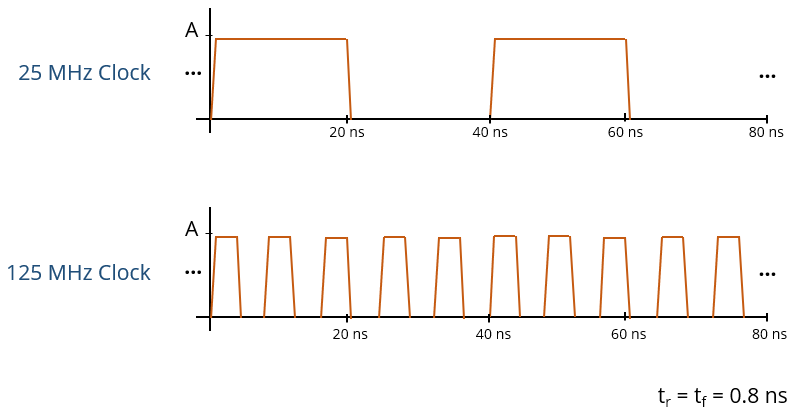EMC Question of the Week: June 27, 2022

A 25 MHz clock signal and a 125 MHz clock signal both have 0.8 ns transition times. They have the same amplitude, the same 50% duty cycle, and drive the same load. Which signal has more power in the harmonic at 875 MHz?
- 25 MHz clock
- 125 MHz clock
- both have the same power at 875 MHz
Answer
The best answer is “b.” 875 MHz is the 35th harmonic of 25 MHz and the 7th harmonic of 125 MHz. In both cases, it is an odd harmonic. If the transition time were zero (a perfect square wave), we would expect the amplitude of the harmonic at 875 MHz to be 5 times higher for the 125-MHz clock than the 25-MHz clock. The power is proportional to the square of the amplitude and would be 25 times higher.
The 0.8 ns transition time corresponds to a cut-off frequency of about 1/(πtr) = 400 MHz. This means the transition time is limiting the amplitude of the harmonic at 875 MHz. However, the effect of the transition time is the same for both signals, so the amplitude of the harmonic at 875 MHz is still 5 times higher for the 125 MHz clock than for the 25 MHz clock.
It's common in the EMC literature to find statements suggesting that the high-frequency content of a digital signal is determined by the transition times. However, it's important to remember that the period of the signal is at least equally important. A 10-kHz clock is unlikely to cause a radiated emissions problem above 30 MHz no matter how fast the transition time is. On the other hand, controlling the transition times of clocks between 1 MHz and 100 MHz is often a crucial step in achieving radiated emissions compliance.
Have a comment or question regarding this solution? We'd like to hear from you. Email us at
